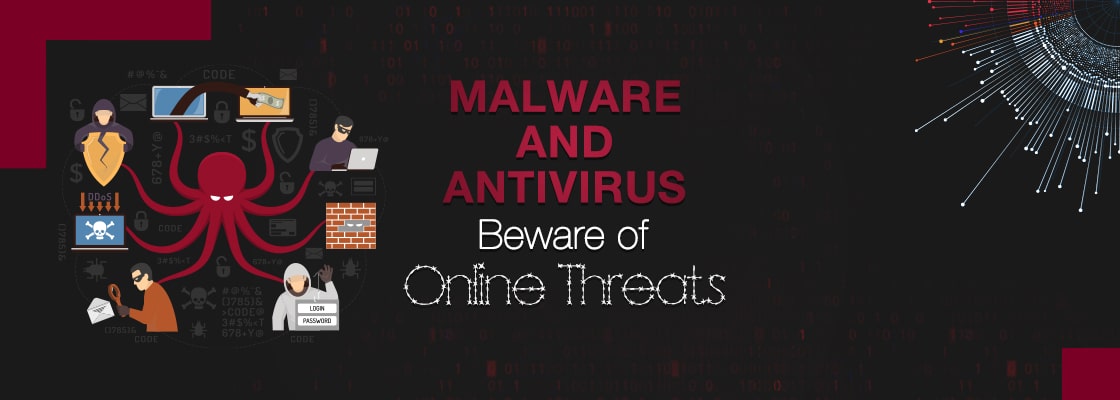
Our lives are becoming increasingly digital, making it even more important to protect our computers from malware. Malware, or malicious software, is software that harms or exploits computers. From stealing personal information to crashing systems and even rendering them unusable, malware can cause a wide range of problems.
Evolution of Malware
Malware has been around since the early days of computing. The first computer virus, called the “Creeper,” was developed in the early 1970s. Since then, malware has evolved significantly, becoming more sophisticated and harder to detect. Malware authors have become more skilled in using various tactics to evade detection and infect systems. They also use social engineering techniques to trick users into downloading and installing malware unknowingly.
Common Types of Malware
There are many types of malware, each with its unique characteristics and behaviors. Some of the most common types of malware include viruses, worms, trojans, ransomware, adware, spyware, and rootkits. Each of these types of malware has different goals and methods of operation. For example:
Viruses replicate themselves and spread from system to system.
- Worms are self-replicating and do not require user intervention to spread.
- Trojans are disguised as legitimate software and trick users into installing them.
- Ransomware encrypts user data and demands a ransom payment to restore access.
- Adware displays unwanted advertisements.
- Spyware collects user data without their knowledge.
- Rootkits give attackers administrative access to a system.
Malware Distribution Channels
Malware can be distributed through various channels, including email attachments, social media links, malicious websites, and software downloads. Malware authors also use exploit kits, which are tools that exploit vulnerabilities in software to infect systems. Malware can be delivered through phishing attacks, where attackers use social engineering to trick users into giving away sensitive information.
Antivirus Technologies
Antivirus software is designed to detect and remove malware from computer systems. Antivirus technologies use various methods to identify and remove malware, including signature-based detection, behavior-based detection, and heuristic analysis. Signature-based detection involves scanning files for known malware signatures, while behavior-based detection looks for suspicious behavior that may indicate malware. Heuristic analysis involves analyzing the behavior of code to determine if it is malicious.
Antivirus Effectiveness and Challenges
While antivirus software is effective at detecting and removing many types of malware, it has some limitations. Malware authors are constantly developing new methods of evading detection, making it challenging for antivirus software to keep up. Additionally, many users fail to keep their antivirus software up to date, leaving their systems vulnerable to new threats.
Best Practices for Malware Protection
To protect your systems from malware, there are several best practices you should follow. Firstly, keep your software and operating system up to date with the latest security patches and updates. Secondly, use strong and unique passwords for all your accounts and enable two-factor authentication wherever possible. Thirdly, be cautious when opening email attachments or clicking on links, particularly if the sender is unknown or the content seems suspicious. Fourthly, avoid downloading software from untrusted sources and always verify the authenticity of the software before installing it. Finally, use reputable antivirus software and keep it up to date with the latest virus definitions.
Mobile Malware
Mobile devices, such as smartphones and tablets, are also vulnerable to malware attacks. Mobile malware can be spread through malicious apps, phishing attacks, and unsecured Wi-Fi networks. To protect your mobile devices from malware, follow similar best practices as for computer systems. Keep your software up to date, use strong passwords and two-factor authentication, and only download apps from trusted sources.
Malware in the Internet of Things (IoT)
The Internet of Things (IoT) refers to the network of devices, such as smart home appliances and wearable technology, that are connected to the Internet. These devices are also vulnerable to malware attacks and can be used to launch attacks on other systems. To protect your IoT devices from malware, ensure that they are secured with strong passwords and are updated with the latest security patches.
Malware Analysis and Reverse Engineering
Malware analysis and reverse engineering involve analyzing the behavior of malware and identifying its characteristics. Malware analysts use various tools and techniques to reverse engineer malware and understand how it works. This process can help identify new malware strains and develop better methods of detecting and removing them.
Future Trends in Malware and Antivirus
As technology continues to evolve, so do the threats posed by malware. Malware authors are constantly developing new methods of attack, making it challenging for antivirus software to keep up. In the future, we can expect to see the emergence of new types of malware, such as AI-powered malware and malware targeting IoT devices. To combat these threats, antivirus technologies will need to become more sophisticated and use new methods of detection and prevention.
In the end, protecting your computer systems from malware is essential in today’s digital age. By following best practices for malware protection, using reputable antivirus software, and keeping your software up to date, you can reduce the risk of malware infecting your systems. As technology continues to evolve, it is important to stay informed about the latest threats and trends in malware and antivirus and to adapt your security measures accordingly.



